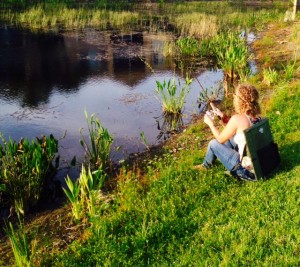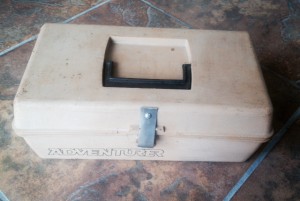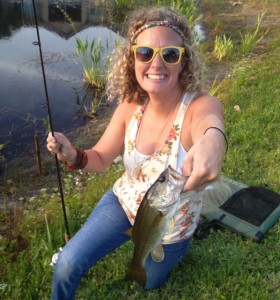6 Tips to Help You Keep Fishing Simple
By Debbie Hanson
May 05, 2014
Sometimes anglers like to make fishing more complicated than it needs to be… particularly after we've been doing it for a few years.
Sometimes anglers like to make fishing more complicated than it needs to be… particularly after we've been doing it for a few years. What used to be a simple day of fishing for bluegill or bass in the neighborhood pond with a basic spincast combo and two-tray tackle box has somehow evolved into a two-hour trip to Lake Okeechobee, seven different kinds of fishing rods and a tackle bag that rivals a Samsonite suitcase in size.

.jpg)
My point? The extra gear can certainly be beneficial in many situations, but there are also times when it makes sense to simplify your fishing routine by getting back to the basics. This is especially true if you are mentoring a beginning angler or taking someone new fishing for the first time. You'll have much better luck keeping a new angler interested if you avoid confusing them with a myriad of details about the hundreds of lures you could use — and keep fishing simple to start.


Here are a few ideas for going back to the basics with gear and tackle set-ups:
-
Use a basic rod, reel, line and leader set-up. When fishing with a new or beginning angler, suggest that they start off with a simple 6-foot spincast rod and reel combo that comes pre-spooled with line (you can use reels that come pre-spooled with 6 to 8 lb test for freshwater and 10 to 15 lb test for saltwater pier or shore fishing). Remember that closed-face reels are best used for freshwater fishing and open-face are best for saltwater. When it comes to leader material, 10 to 15 lb leader generally works well for freshwater. Try heavier 15 to 20 lb leader material for saltwater fishing since barnacles, oysters and toothy fish can wear or break leaders fairly easily.
-
Use a simple hook assortment and versatile lures. Buy a variety pack of hooks that contains an assortment of sizes such as 4, 6 and 8 for freshwater or 10 to 4/0 for saltwater. Simple lures that can be used in both freshwater and saltwater situations are metal spoons or bucktail jigs.
-
Bring one small tackle box. A single or double tray tackle box will work fine for beginners or when you want to travel light. Walking the shorelines of lakes, ponds and beaches is much easier when you can lighten your load by paring down (experienced anglers can just transfer the basics into a smaller, lighter tackle box or tray for ease in transporting).
-
One or two bobbers and floats in a few different sizes. Just like hooks, bobbers and floats come in variety packs. This will give you a few of each in varying sizes to start out with depending on where you are fishing and the type of bait you are using.
-
Pack a small assortment of weights. Bring along a simple assortment of reusable split-shot weights in sizes such as #3/0, #7, #5, #4, #3 and #2.
-
Use a small bait bucket with built in aerator. Use one small bait bucket that comes with a built-in aerator. Several manufacturers that make these specifically for kayak fishing, but they can also be easily used for wade or shore fishing as well.


Now that you know how to keep your fishing routine simple, learn how to tie strong knots, and rig your lines with the gear described in this post.









